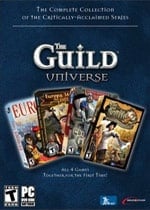Build Your Dynasty
For some gamers, picking up re-released collections of older PC games is a great way to get caught up on some excellent titles they missed on the first go around. Also, the once-steep system requirements of some older games may not be such an issue on upgraded, current-generation PC hardware. Occasionally, publishers capitalize on this since many players don’t have deep enough pockets to keep up with the need for frequent upgrades to get new games up and running smoothly, but other times a series is just so good it warrants seeing the light of day once again. The Guild Universe falls somewhere in between: it’s a collection of slightly aged medieval civilization and economic simulation titles and expansions that have a few irksome quirks, but on the whole they’re definitely worth revisiting.
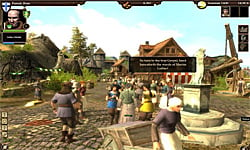
Mixing elements of life simulation, role-playing, medieval time, civilization building, and historic real-time strategy, the Guild series has offered a deep, open-ended play experience over the years since it first came out in 2002. This reasonably priced collection contains Europa 1400: The Guild and add-on expansion pack, The Guild 2, and The Guild 2: Pirates of the High Seas. It’s a fairly strong series, and the minor shortcomings of each separate installment are generally balanced out by the highlights of the whole package. The four components essentially break down into two full games with each expansion already integrated into its main title. There’s no option to separate the two main games from their corresponding expansions, but that’s not a bad thing. Aside from a decent mission-based campaign, the pirate expansion enables naval trading, sea battles, new professions, additional maps, and other goodies.
In Europa 1400, players will be charged with creating a medieval dynasty from the ground up and managing their guild as it slowly grows through hard work and perseverance in the face of stiff competition. Exactly what role you’ll take on in society and how you choose to go about advancing their house is completely up to you. You can choose to be an upstanding citizen, run for public office, craft and sell your own wares, and stake out a healthy and honest living; or you can engage in thievery, conduct espionage, and cheat, maim, or bribe your way to the top. It’s fun to have the option to play one extreme or the other, and players can also stick to the middle road if they like.
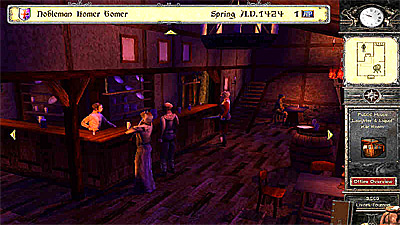
A wide range of different professions are available, and running various shops and operations is necessary to expand your dynasty. Players can specialize in weapon crafting, alchemy, bartending, and many other pursuits, although most revolve around producing goods which can be shipped and sold at a reasonable profit at the local market. Early on, this involves hiring staff, upgrading your shop and home, keeping a steady supply of ingredients needed to craft items, and cranking out products assembly line style. Eventually you’ll be able to afford hiring someone to oversee your operation which will free up time to let you engage in other activities including interacting with citizenry, running for local election, and taking on additional work. Running a thieves guild is the only major exception since players will spend more time robbing, waylaying unwary travelers, and being a thorn in the side of society.
The initial learning curve is quite steep, and it’s hard not to be slightly overwhelmed by the range of possibilities available to players from the onset of gameplay. Spend a little time getting up to speed, however, and you’ll quickly find Europa is surprisingly deep and engrossing once you move beyond the early stages of play. It’s worth taking the time to play through a couple of different dynasties in order to explore all the possibilities and professions. Each day you’ll be awarded points that can be used to level-up your profession ranking or increase other important skills which will help you keep the edge over the competition. There are also numerous upgrades that can be purchased for you home and business, and it’s possible to build and manage new structures in town. In order to continue playing your dynasty once you’ve shed your mortal coil, you’ll have to get married and have children who can carry your legacy forward into the future. You can also speed up the process by leaping out of a window to certain doom which lets you play on as your offspring.
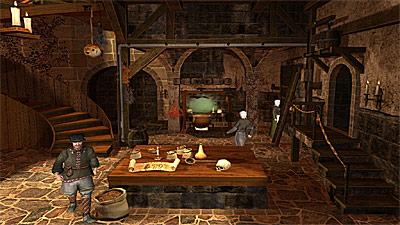
The graphics in Europa are pretty rough by today’s standards, but the game itself is amazingly solid. Inside buildings, the camera angle moves from an overhead view to the player’s first-person perspective. Using the mouse to indicate a direction automatically pans the camera to different angles and lets you interact with the scenery. It’s a neat interface, but the visuals are lacking. Fortunately, the gameplay holds up well for an older title. It’s easy to look beyond the meager graphical trappings, once you get sucked into the meat of the game.
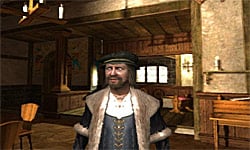
The Guild 2 and the Pirates of the European Seas expansion feature vastly improved graphics and some excellent tweaks to the gameplay. Unfortunately, it also ramps up the level of micromanaging required, which ultimately detracts from the rest of the bells and whistles that otherwise make it an improvement over the original. The game follows roughly the same premise and general mechanics as its predecessor, only this time the game takes place in 15th century Europe. In a slight variation, players are also given direct third-person control over their own characters and other members of their family dynasty. You’ll get to hand-pick each character’s visual features, which is a nice touch. The game also includes a deeper character development system which lets you select special attributes every few levels and equip them with different weapons, items, and armor.
There are primarily four professions to pick from – patrons, scholars, craftsmen, and rogues – and each has numerous sub-classes available to pursue. For the most part, they’re basically the same kind of jobs you’ll find in Europa. Grinding away in the shop all day to produce whatever money making items are available to your profession was fun in the first title, but even with an increased level of detail it starts to become a bit of a drag in The Guild 2. It’s even tougher to handle the second time around since you’ll also be micromanaging your employees and family members to boot. Shoddy A.I. path finding means you’ll have to spend more time babysitting characters and supply carts to make sure they get where they need to go efficiently, assuming they’re not jumped by brigands repeatedly.
Both games manage to nail some gameplay aspects just right, and each has its own high points that make is stand out from the other in some way or another. The built-in expansions also extend the features greatly, giving players a substantial amount of content for their buck. A huge variety of play options, a downright extreme level of gameplay depth, and immense re-playability make The Guild Universe worth the investment. Dated visuals and an unnecessary level of micromanagement are minor setbacks, but they don’t spoil the overall value of this collection.
RATING OUT OF 5 RATING DESCRIPTION 3.6 Graphics
Europa is rough around the edges in the visual department, but it’s decent for having been released six years ago. The Guild 2 is a major improvement, despite a few minor glitches. 3.8 Control
A few issues come up here and there, but overall the control and camera options are solid. 3.7 Music / Sound FX / Voice Acting
The music between the two titles is reasonably fitting and the voice work is decent. 4.4 Play Value
Between the two Guild games and expansions there’s a ton of depth and plenty of reason to dive back in for more once you’ve played it through. 3.9 Overall Rating – Good
Not an average. See Rating legend above for a final score breakdown.
Game Features:
